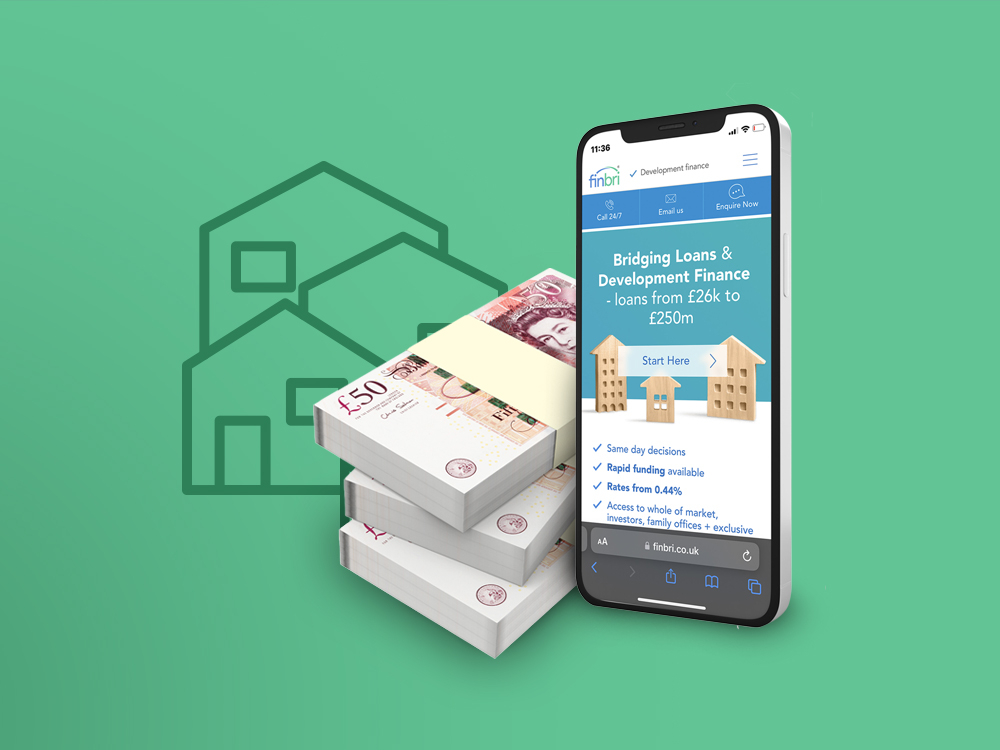Guide to property financing options
As a property investor, this issue is possibly the most important one of all. Financing makes or breaks an investment.

Mortgages
The most common form of property financing is the mortgage (or buy-to-let mortgage), typically sourced from a bank or building society. There are hundreds of mortgage products available in the UK, so you can choose from many different options:
- A repayment mortgage, where your monthly payment includes interest plus a portion of the capital that you have borrowed.
- An interest only mortgage where your payments only cover interest on the capital. You need to make other arrangements to repay the capital at the end of the mortgage term.
- Mortgages can last anywhere from five years up to 35 years or even longer. A shorter term will mean higher monthly repayments.
- The interest rate that you pay can either be fixed for a specific period of time – generally between two and five years – or a Standard Variable Rate, which moves along with UK national interest rates. Or it could be a ‘tracker’ mortgage, following the Bank of England’s interest rate for example.
The interest rate that you’re offered, and the size of deposit that lenders demand, will depend upon your age, your income and expenditure, your credit history and the type of property you’re buying. Lenders prefer traditional stone or brick-built houses with tiled roofs rather than wooden homes or thatched roofs. They prefer freehold to leasehold properties (where you may be at the mercy of high service charges or renovation bills) and are happier if the property is not in an area of flood risk.
Even if you have a poor credit history, an insecure income, a small deposit, you’re over 50 or want to buy a non-traditional property, you may still be able to find lenders who will extend you mortgage finance. Specialist mortgage brokers can advise you on these options. The interest rate and/or deposit may be higher than for other borrowers, however.
To take out a mortgage of any size, you’ll currently have to provide a deposit of at least 5 per cent and sometimes as much as 50 per cent of the property’s value, depending upon your credit status and other factors.
As a rule of thumb, lenders will make mortgage offers based on four-to-four-and-a-half times income. So if you earn a salary of £50,000 as a full time employee, or make £50,000 a year in self-employment, you can expect to borrow up to £225,000.
Self-employed people need to provide three years of approved accounts, along with itemised lists of borrowings, future income and prospective outgoings.
Many lenders offer buy-to-let mortgages which are usually interest only, so investors can cover their payments through charging rent to tenants. They can then pay off the capital at the end of the term through selling the property, or from other sources. Lenders generally want a deposit of at least 50 per cent with buy-to-let mortgages.
If you already own a property, you could consider equity financing, where you borrow money based on your existing equity. This is similar to a mortgage, since it uses your home as security for the loan.
When calculating mortgage affordability, bear in mind the likely extras you’ll have to pay:
- An arrangement fee, which lenders charge for administering the mortgage. This can be anywhere from a few hundred pounds to £2,000 or more.
- A booking fee, which you must pay in advance for a mortgage and isn’t refundable if you pull out or the deal falls through. This is typically £100.
- A valuation fee, charged by the lender to carry out a survey to value the property. Some lenders include this in the arrangement fee and some charge it separately. Depending on the size of the property, it can cost anything from £200 to £1,500.
- A transfer fee. This covers the payment from the mortgage lender to your solicitor, and is usually a modest about, say between £30 and £60.
- A higher lending charge can apply if you have a relatively small deposit. It pays for the lender’s insurance in case you can’t repay the mortgage and they have to sell the property at a loss. It’s usually around 1.5 per cent of the mortgage.
- Legal fee, charged by your solicitor, either as a fixed fee or as a percentage of the mortgage. It’s often around £1,000, or higher, if it includes the Stamp Duty Land Tax, which they pay on your behalf.
Bridging finance
This shorter-term form of lending comes into its own in four main areas of property investment.
1. Buying property from Auction
If you’re buying a property at auction, you may need to raise significant funds quickly. Arranging a mortgage is likely to take at least three weeks and often six or seven. Whereas you can secure bridging finance in a matter of days. Bridging finance can be an especially useful financing option when the property is unmortgageable with high street lenders due to disrepair.
2. Buying before selling another property
The second major reason to take out bridging finance is where you’re buying and selling simultaneously and you need to pay for one property before you’ve sold the other. Bridging finance enables you to close the transaction in good time, rather than be rushed into an unsuitable deal – or keep other people waiting.
3. Property flipping
Third, bridging finance can work well if you’re buying properties to refurbish or renovate and sell (aka ‘flipping’ properties). If you’re confident that you can complete the work in good time and make a sale, then the potential profits from this arrangement will far outweigh the interest payments you’ll have to make.
4. Buying leaseholds with short leases
Fourthly, bridging finance can be used to purchase leasehold properties such as flats that have a short lease. As high street banks avoid lending in these situations the purchase price for the property is often low to attract potential cash buyers. Once the property is purchased the lease can then be negotiated - be warned it can take some months and will cost you upwards of £2,400 and in some cases a lot more. Read this useful guide for more about lease extension costs and financing.
“We've seen first hand that property investors can unlock significant value through using bridging finance,” says Stephen Clark at bridging loan Finbri. “For serious property investors, flexibility and speed make all the difference to whether a deal happens or not.”
Other finance options
You may have friends or relatives who could lend you money to buy property. If you're receiving a large sum from a benefactor as a gift you may expose yourself to inheritance tax implications should that person die within 7 years of gifting you the money. Or the friend or relative could secure a mortgage for you, based on the equity in their own property. This would however put their property at risk if you defaulted on the mortgage payments.
Read next: The guide to residential vs commercial properties
Read the full guide: The guide to property investment
Mini Bridging Loan
Up to £750k available in 3 to 7 days! Our lenders keep fees & fuss to a min using in-house valuations & dual rep solicitors. Suitable for individuals & businesses.
Discover More





